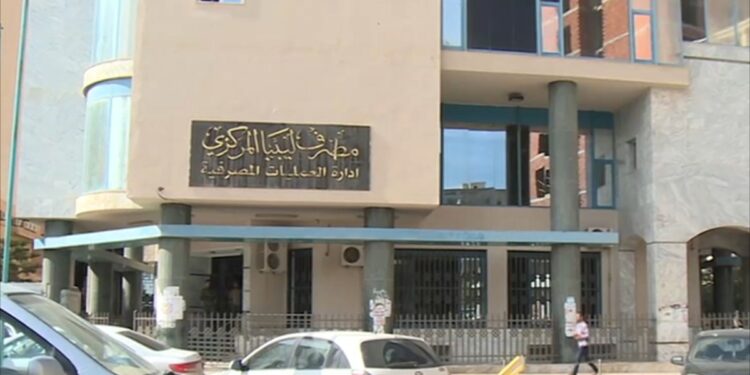The Central Bank of Libya announced today, Sunday, the exchange rate of the Libyan dinar by 13.3% to 5.5677 dinars against the US dollar, which is the first official reduction since 2020, when the price was set at 4.48 dinars for the dollar.
Reuters said that the decision, which came into effect from today, was published in an official statement to the bank, stating: “Reducing the Libyan dinar exchange rate against foreign currencies by 13.3%… This decision works as of the sixth Sunday of April 2025.”
This procedure comes in light of the continued financial pressure and institutional division in the country. Reuters explained that the dinar exchange rate in the parallel market reached 7.20 dinars against the US dollar, which reflects a wide gap between the official price and the informal market.
The background of the banking and political crisis
The agency indicated that a banking crisis erupted in September 2024 against the backdrop of a struggle for controlling the central bank branches in Tripoli and Benghazi, which led to a decline in Libyan oil production and exports, which is the main source of foreign currency in the country.
At the end of September of the same year, representatives of the two legislative councils reached the government of western and eastern Libya to an agreement by the United Nations, paved the way for the unification of the financial institution and the appointment of a new governor of the Central Bank of Libya.
Reducing taxes on the purchase of foreign currency
In November 2024, Parliament Speaker stationed in the East announced the reduction of the tax imposed on foreign currency purchases from 20% to 15%, a tax added to the exchange rate when citizens buy currencies from commercial banks.
In a statement issued today, the Central Bank of Libya said that the total spending of the two competitors during the year 2024 amounted to 224 billion dinars (about 46 billion dollars), including 42 billion dinars (about 8.6 billion dollars) allocated to crude oil exchanges for imported fuel.
The bank added that the public debt amounted to 270 billion dinars (about 55.7 billion dollars), expected to exceed 330 billion dinars (about 68 billion dollars) by the end of the year, in light of the continued absence of a unified budget for the state.
In a related context, Reuters quoted Stephanie Khoury, Vice -President of the United Nations Mission to Libya, invited in December 2024 to decision makers in the country to the urgent agreement on a unified spending framework for the year 2025.
Khoury said at the time: “There is an urgent need to agree on a clear framework for spending in 2025 that includes limits and supervision procedures agreed upon by both parties.”
Economy under permanent pressure
Libya is one of the oil -rich countries, but it suffers from political and security turmoil since the 2011 uprising that overthrew Muammar Gaddafi, and the sharp political division that followed since 2014 between two competing governments, each of which runs part of the country with financial institutions independent of the other.
According to observers, the recent decision to reduce the value of the dinar reflects a desperate attempt to reduce the gap between the official price and the price of the black market, and to improve revenues from the sale of foreign currency, but its actual impact will depend on the stability of oil exports and the general political situation.



